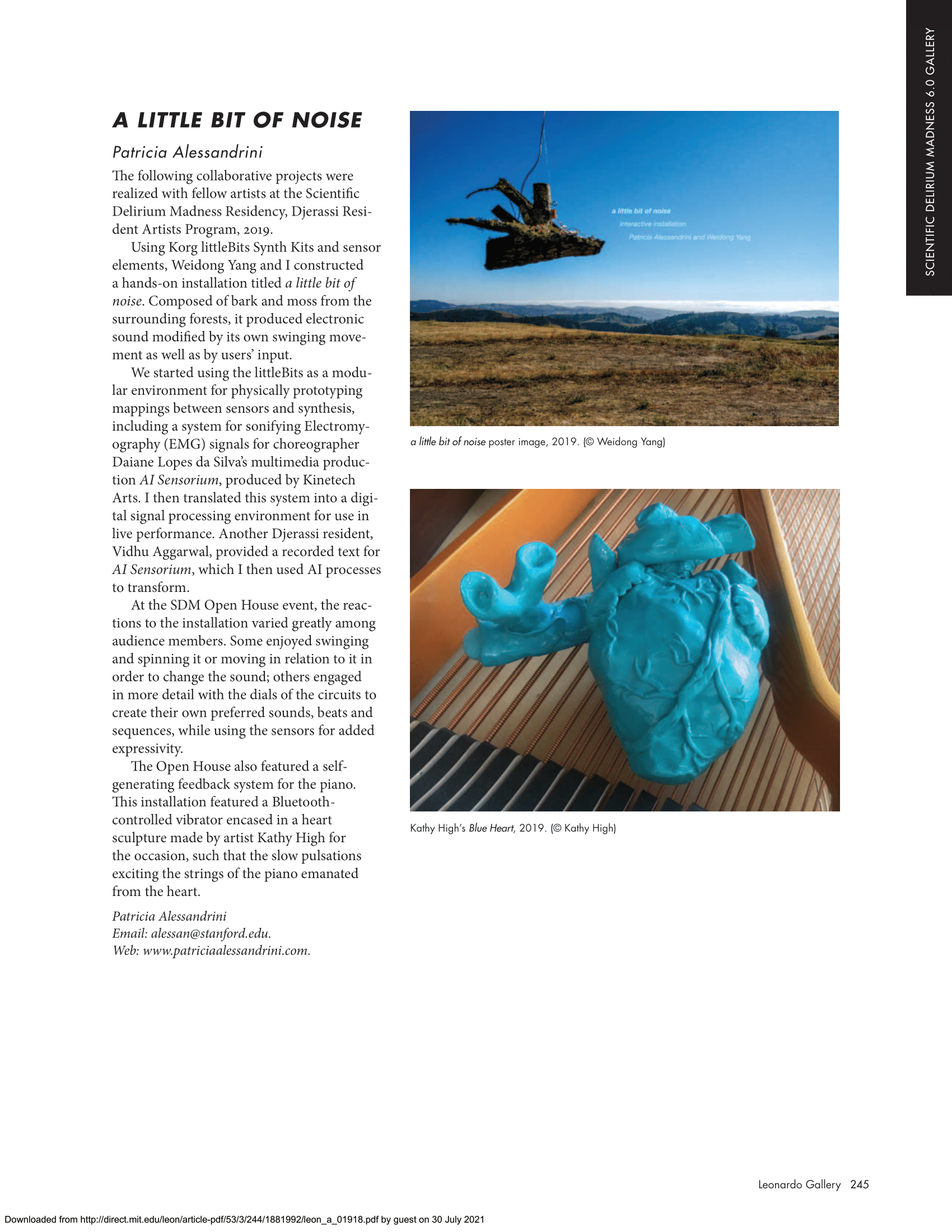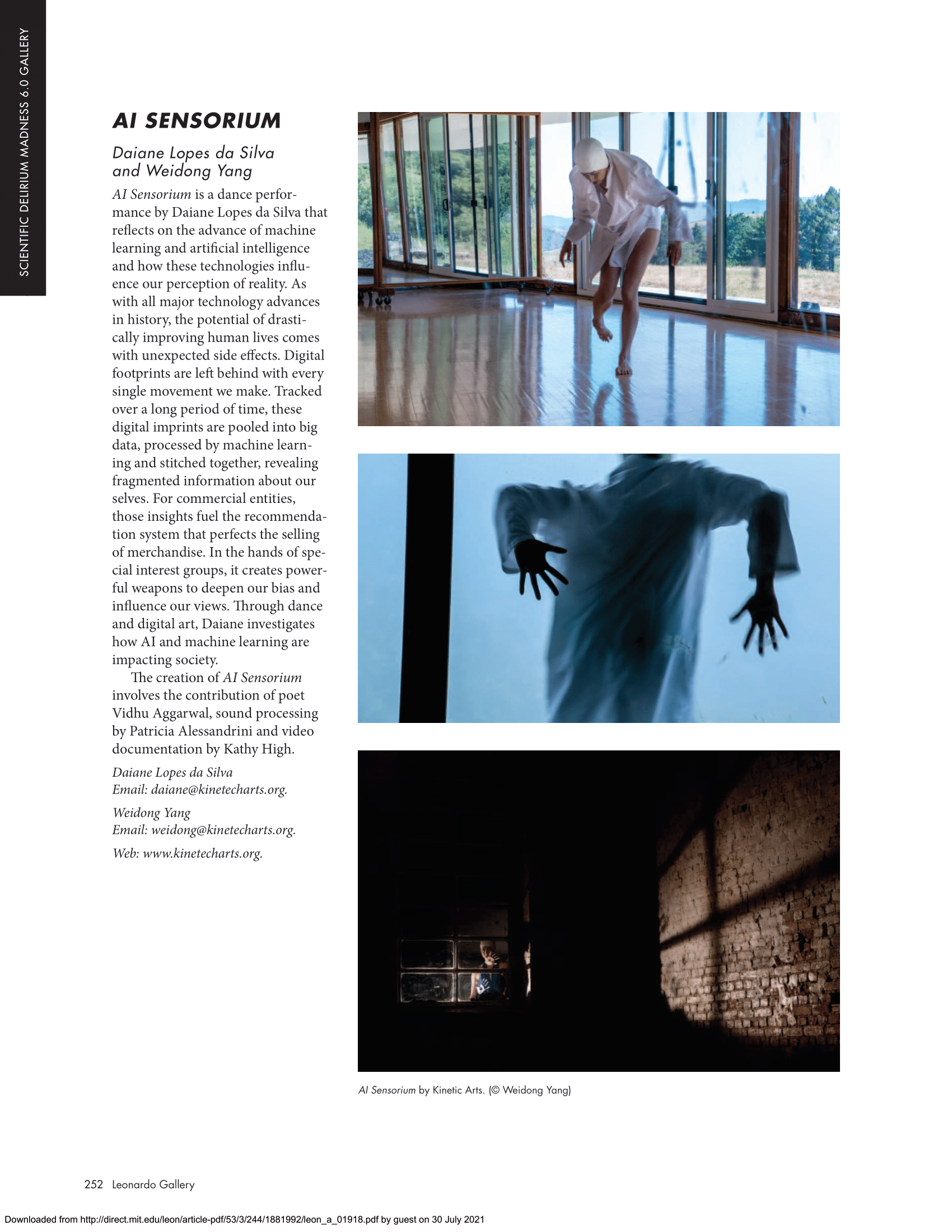Since we were together in the Scientific Delirium Madness residency of the Djerassi Foundation in the summer of 2019, I have been collaborating with choreographer/dancer/movement artist Daiane Lopez-DaSilva, visual artist and designer Michael Koehle, and media artist and data scientist Weidong Yang as part of a collective group making intermedial installations and performances. These works generally reflect upon technological developments and their social consequences, their ecological impact, and more broadly, their importance of our decisions about them and approach to them for the future of humanity.
Our first collective work was A Little Bit of Noise, an installation made from a combination of circuits, sensors and natural materials found in the forests surrounding the residency. It allowed participants to have an embodied, interactive experience of nature and technology in an extremely delicate balance, literally hanging by a thread. We then began work on AI Sensorium, a large-scale performance reflecting on the impacts of AI on our lives and futures, presenting a work-in-progress version for the Scientific Delirium Madness Open House, before its full production at the ODC theater in San Francisco. The open house allowed us to set the work, with its fragmented, AI-produced texts and music, against the backdrop of Djerassi’s carefully maintained nature reserve, which brought into keen focus what may be at stake in the future. I also created an installation for a collective presentation we made at the Beyond the Body event at Swissnex (San Francisco) on November 9, 2019, entitled Adagio de l’intérieur.
After some difficulties presenting work during the first years of the pandemic, our four-member collective was selected for a three-month residency at the 836M Gallery in San Francisco in January-March 2023, to present our new series of performances combined with an interactive installation entitled Aurum, which engages with the speculation and profiteering of Silicon Valley through the lens of the history of the Gold Rush, comparing their relative impacts of population displacement and ecological disruption and destruction. This work employ cymatics (the visual representation of sound vibrations) in combination with haptic feedback (which employs the sense of touch) to translate electrocardiogram (EKG) signals into a multisensory experience allowing for tactile, kinaesthetic, auditory and visual engagement. Water is omnipresent in this work as the medium for the cymatic representation of sound, and represents the literal displacement of the waterfront and its ecosystem under economic pressure, from just near the present location of the 836M Gallery to its current location blocks away.


